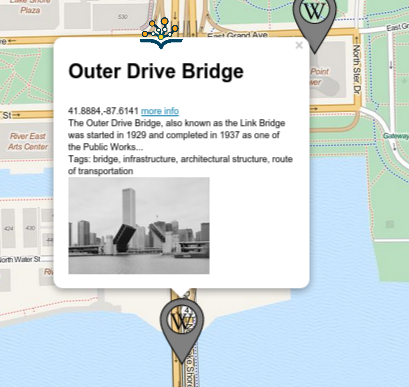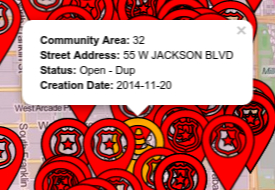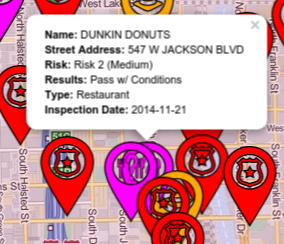Project Data
Data Overview
Project 3 is a data visualization application on real-time feeds of Chicago 3-11 data (potholes, abandoned vehicles, etc.), CTA Bus Tracker data, and Divvy Bike data. On this page, we will describe API's used to retrieve the data, the refresh data rates, and optimization design decisions for enabling the application to handle the approximately 30,000 data points loaded and refreshed.API's\External Services

Datasets
The following provides a description of each of the datasets used in the application.| Dataset | Description | API | Refresh Rate (Seconds) |
| Potholes | These are small holes in the road that need repair. | SODA | 120 |
| Abandoned Vehicles | A car is considered abandoned if it's irrepairable, it's deserted, or it's hazardous | SODA | 130 |
| Street Lights | An outage of at least 1 street light out on a street. | SODA | 140 |
| Crime | These are reported crimes (with the exception of murder) occurring since 2001. | SODA | 100 |
| Divvy Bike Stations | Lists the current status (in service vs out of service, available docks, etc) for each station. | JSON | 80 |
| Food Inspection | This refers to the inspection of food establishments in Chicago since 2010. | SODA | 150 |
| CTA Bus Tracker | The current CTA buses in Chicago moving around. | CTA API | 60 |
Data Design
We now discuss the design details of each of our datasets.Data Implementation
We implemented our datasets using yahooapis wrapper for each specific http request call. Custom marker icons were developed to uniquely identify each of the datasets along with a unique color for each. Finally, we added popup option upon click that displays information about each data point. The three screenshots below are example popups for (1) potholes, (2) food inspection, and (3) crime.

